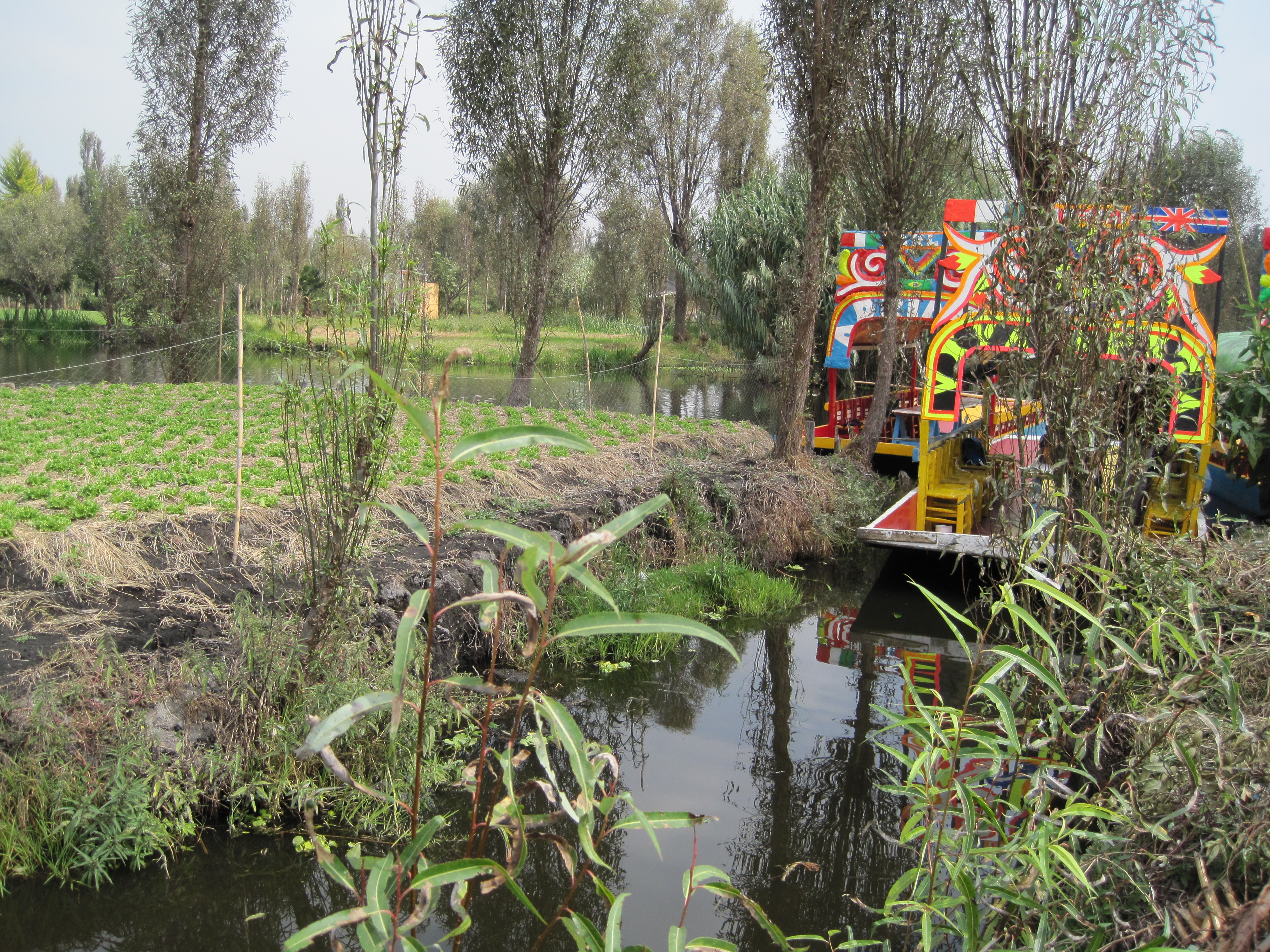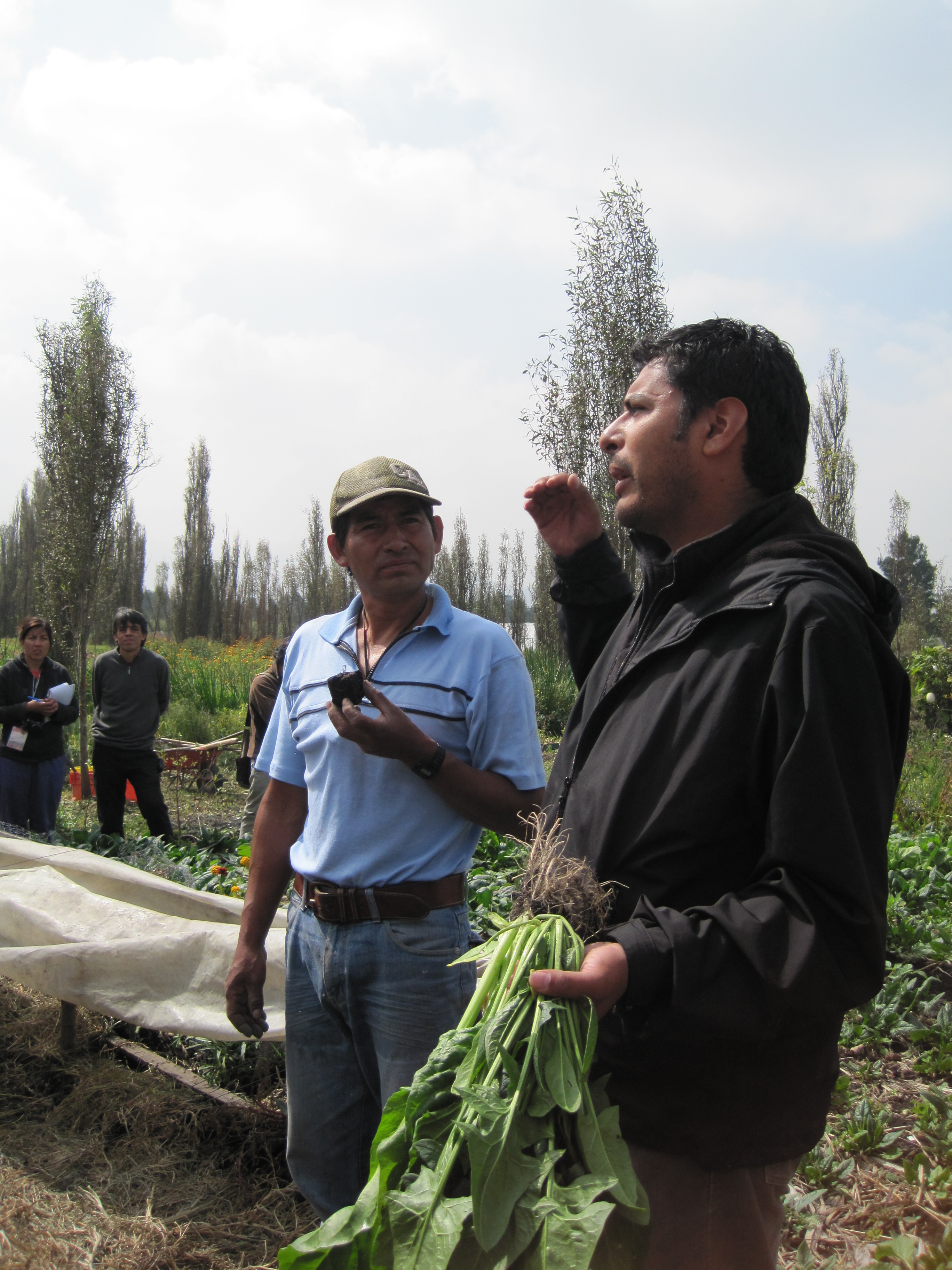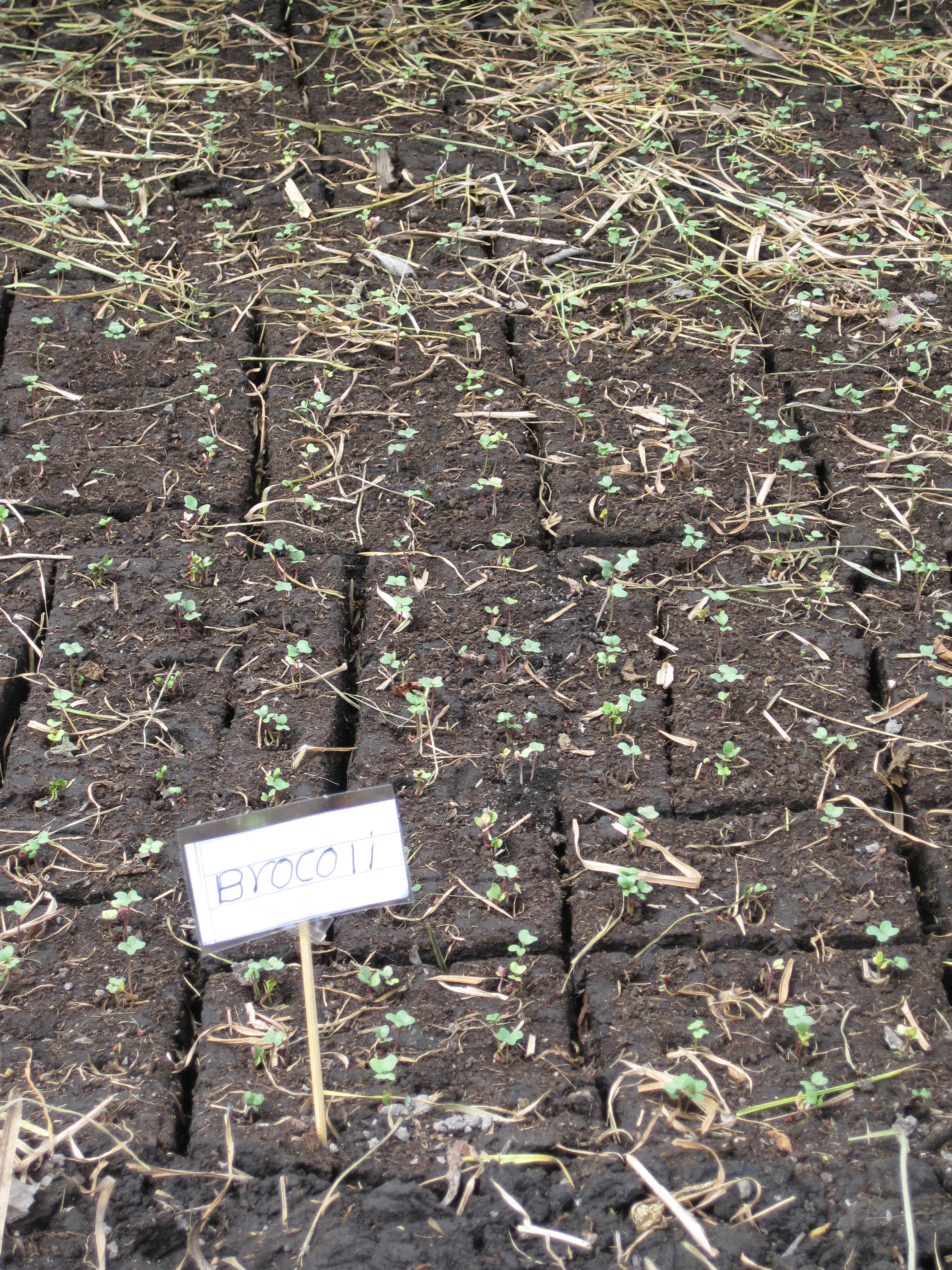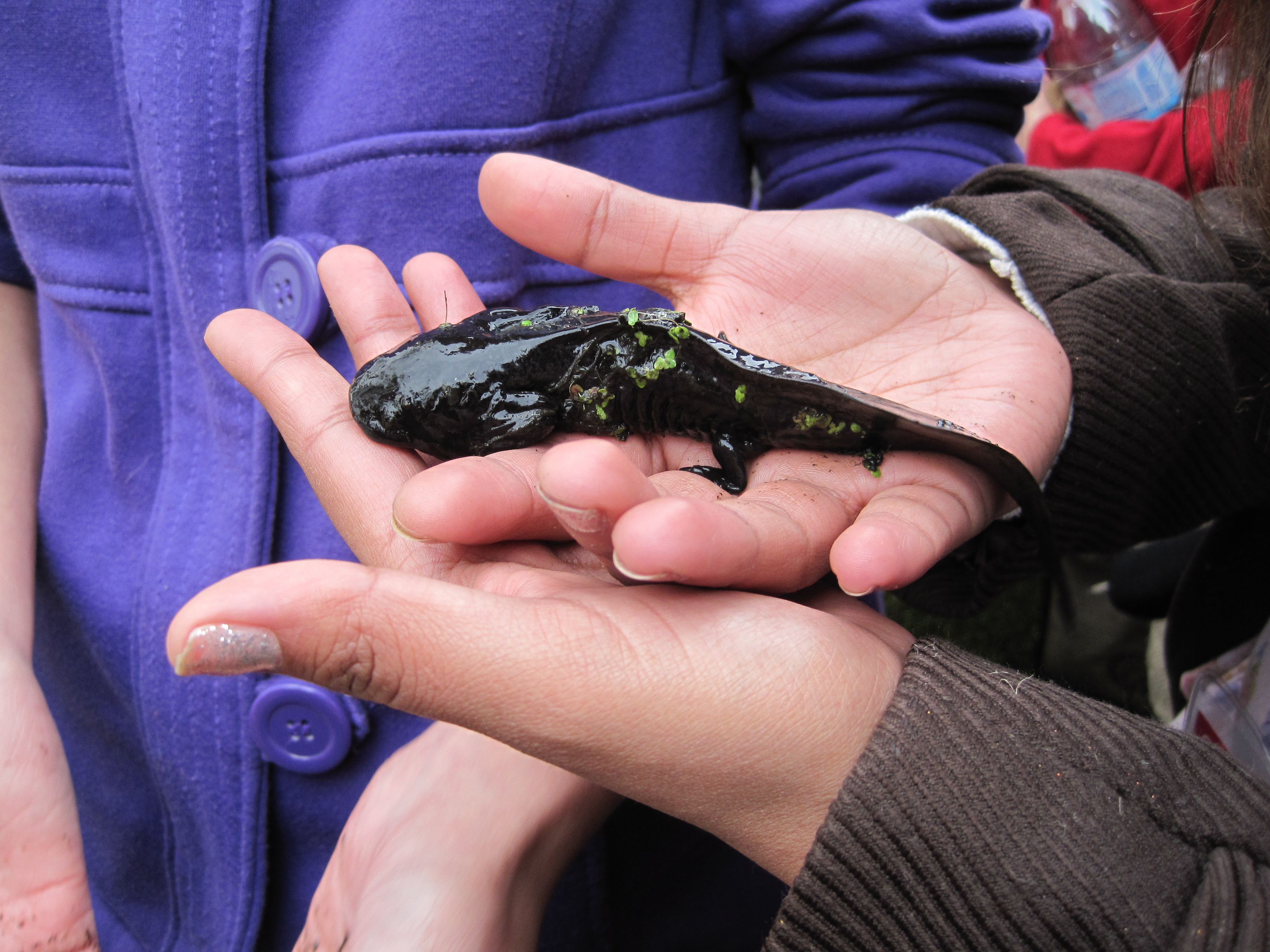I had the very good fortune to visit Mexico recently and was lucky enough to go to the Xochimilco World Heritage Site. The area is known for its floating gardens and consists of canals and islands developed in the marshy lakes by the ancient Aztecs in 1150 – 1350. The Aztec people built up floating rafts of woven vegetation and lake sediment, here they planted willows which rooted into the swamps and eventually formed permanent islands or Chinampas. The Chinampas are very fertile and have been used for growing food crops and flowers for hundreds of yea rs.
rs.
The gardens are an excellent example of sustainable agriculture, requiring no artificial fertilizers to produce good crops. On our trip to the area we visited a grower called Bacilio and his beautifully maintained Chinampa. Bacilio and translator Mario told us how the system works.
The canals and waterways surrounding the Chinampas fill with sediment throughout the year, washed down from the surrounding volcanic mountains. Annually the growers work together to dredge the canals and use the rich, fertile sediment to mulch their plots. As well as using the sediment for fertiliser the growers mould the soil into squares for use in plant propagation. The sediment is moulded and dried out, then cut into small blocks. Growers sow seed directly into these ‘plugs’. The plugs are covered over with grass to protect the emerging seedlings and keep humidity up.  Once the seedlings are big enough the grower transplants the entire plug into its final position.
Once the seedlings are big enough the grower transplants the entire plug into its final position.
Bacilio grows a mixture of maize and squash in summer and leafy greens such as cilantro (leaf coriander) and spinach in the winter. A popular local crop is Common Purslane (Portulaca oleracea).
This very traditional method of growing has created a unique habitat perfect for the endangered amphibian Axolotyl. Many organisations such as UNAM Botanic Garden in Mexico City are working hard in the area to keep local people on the land and growing on the traditional Chinampas. Initiatives such as forming cooperatives are enabling locals to increase their income by suppling markets as far afield as Chicago with large quantities of Portulaca for the huge Mexican population living there. 
